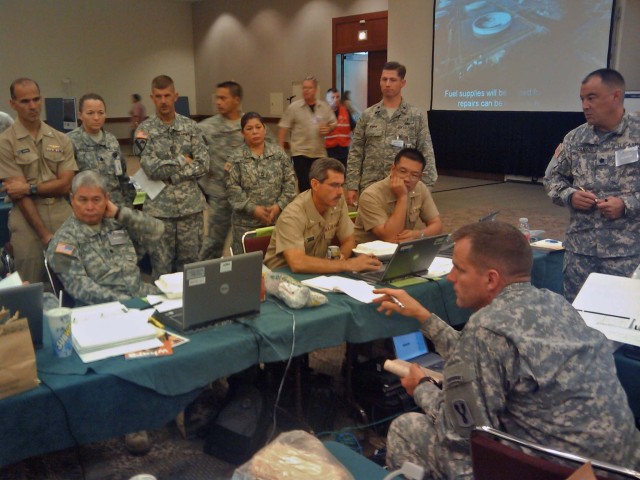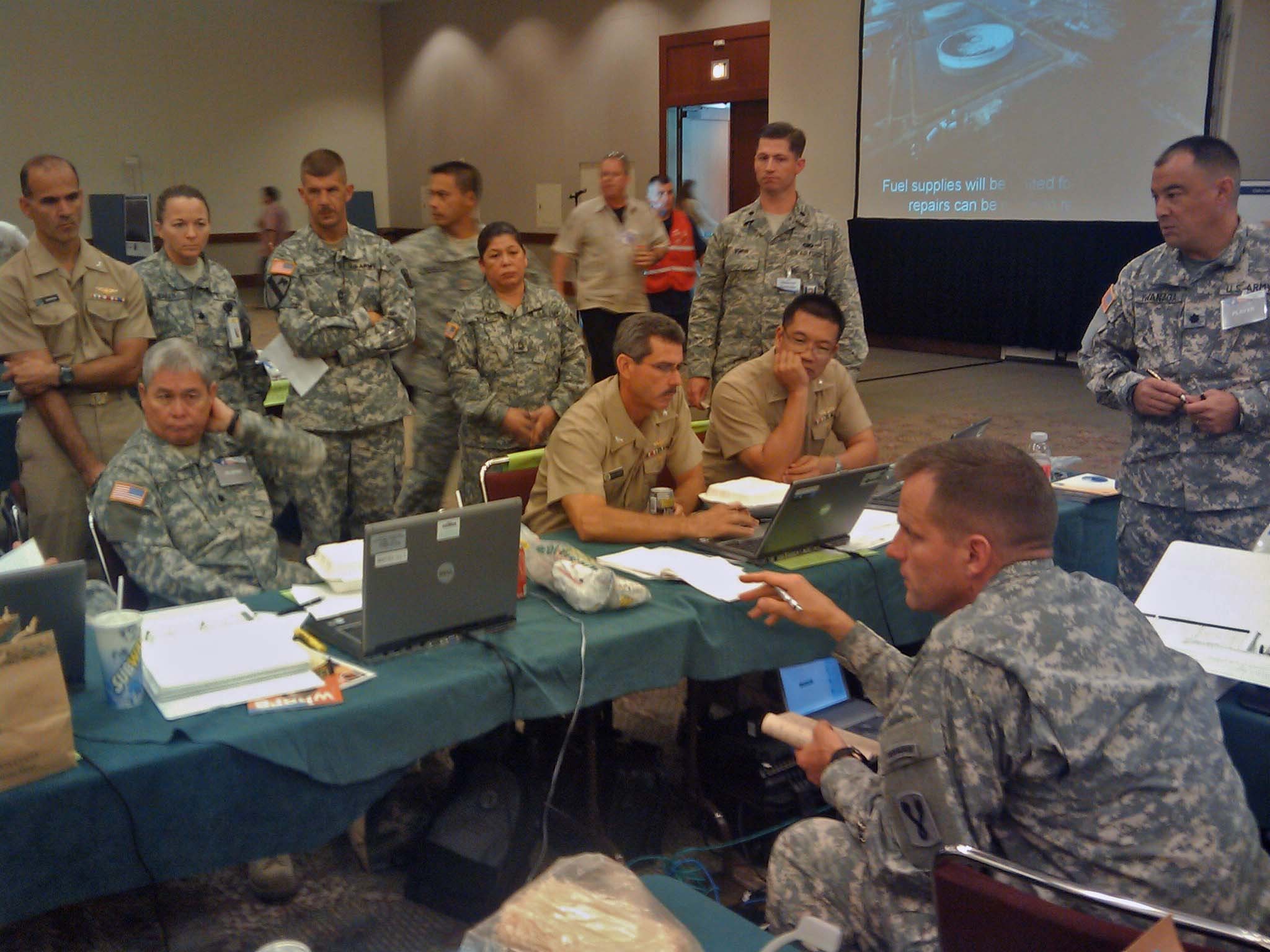
HONOLULU, Hawaii - ItAca,!a,,cs a scenario that emergency responders in Hawaii hope will never happen. A Category 4 hurricane with winds exceeding 135 miles per hour and a storm surge of 15 feet aimed directly at OahuAca,!a,,cs southern shore. But, itAca,!a,,cs an event that experts think will happen sometime in the future and officials want to be as prepared as possible.
Local, state and federal agencies tested their plans, readiness and abilities during an annual hurricane exercise dubbed Aca,!A"Makani Pahili 2009Aca,!A? June 2 through 4.
Playing a pivotal role were members of an organization called the Defense Coordinating Element, an organization whose mission is to help the state and other mid-Pacific island communities prepare and recover from hurricanes and other disasters by coordinating request for military assistance.
Weather and disaster experts predict that a Category 4 hurricane could cause billions of dollars worth of property damage and hundreds of deaths if it were to zero in on populous areas of Oahu. The recovery from such a storm would quickly overwhelm local and state resources requiring federal assistance. ThatAca,!a,,cs when the Defense Coordinating Element (DCE) likely would come into play providing the coordination for help from military assets (Army, Air Force, Navy and Marines).
The 196th Infantry Brigade at Fort Shafter has the mission as the DCE with its commander, Col. James George as the Defense Coordinating Officer (DCO). The organization has liaisons from the Navy, Marines, Air Force and Coast Guard. Those representatives play pivotal roles in assessing the requests for aid and matching them with military assets and resources.
Makani Pahili 2009 is an interagency exercise designed to test the coordinated efforts among all levels of government and private sector organizations. Aca,!A"Given the isolation of the island chain, we have to have dependency and reliance on each other so we can sustain and maintain life support for our residents following a disaster,Aca,!A? Col. George said.
While the DCE is available to coordinate military help to state and local civilian agencies, it is not in charge. Aca,!A"We only step in when requested,Aca,!A? Col. George said. Aca,!A"We are in support of civilian authorities and can provide a substantial amount of help only if called upon.Aca,!A?
The exercise was designed to test agencies to their limits and beyond. Aca,!A"We need to find out what our weaknesses are and use that information to build our ability to respond in the event of a real disaster,Aca,!A? Col. George said. Aca,!A"We donAca,!a,,ct want to wait until an actual event occurs and then determine we donAca,!a,,ct have the resources to respond.Aca,!A?
This yearAca,!a,,cs scenario called for substantial damage not only to civilian property, but to military assets. This situation tested the militaryAca,!a,,cs ability, capabilities and resources to handle situations within its property boundaries while at the same time providing assistance to civil authorities.
Hurricane season starts on June 1 and continues through November 30. For the 2009 hurricane season the National Oceanic Atmospheric Administration (NOAA) predicts the Pacific can expect 13 to 18 named storms with six to 10 hurricanes, of which two to five could be major hurricanes.
-30-

Social Sharing